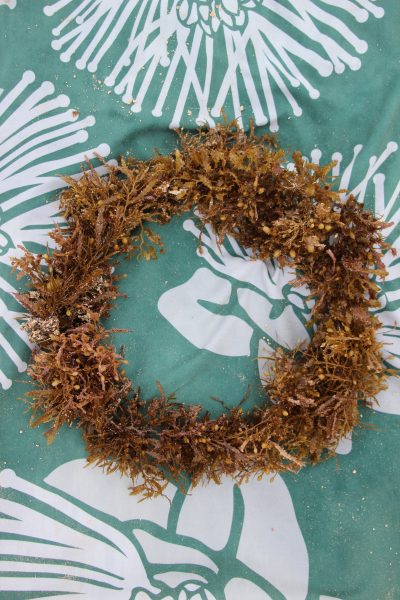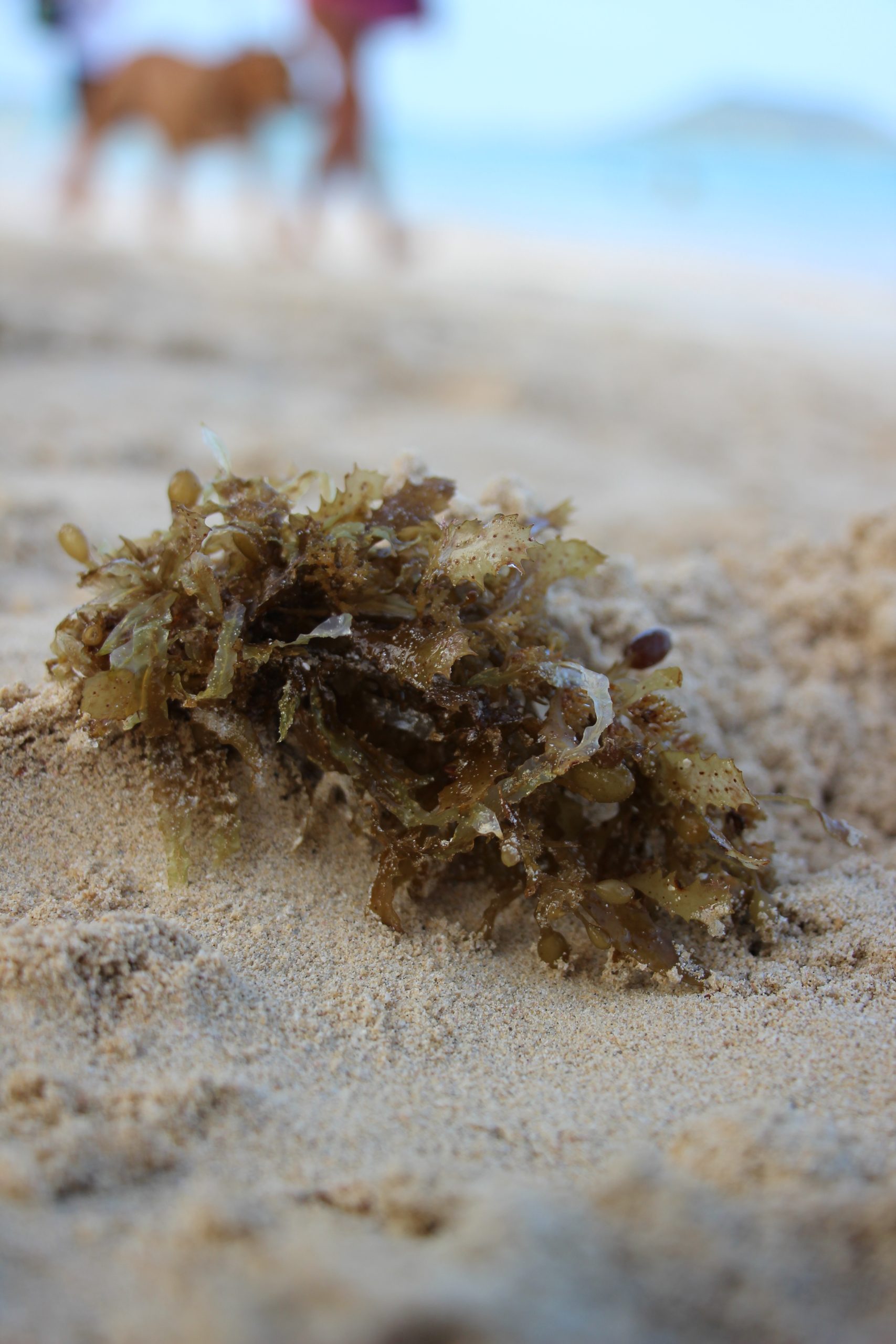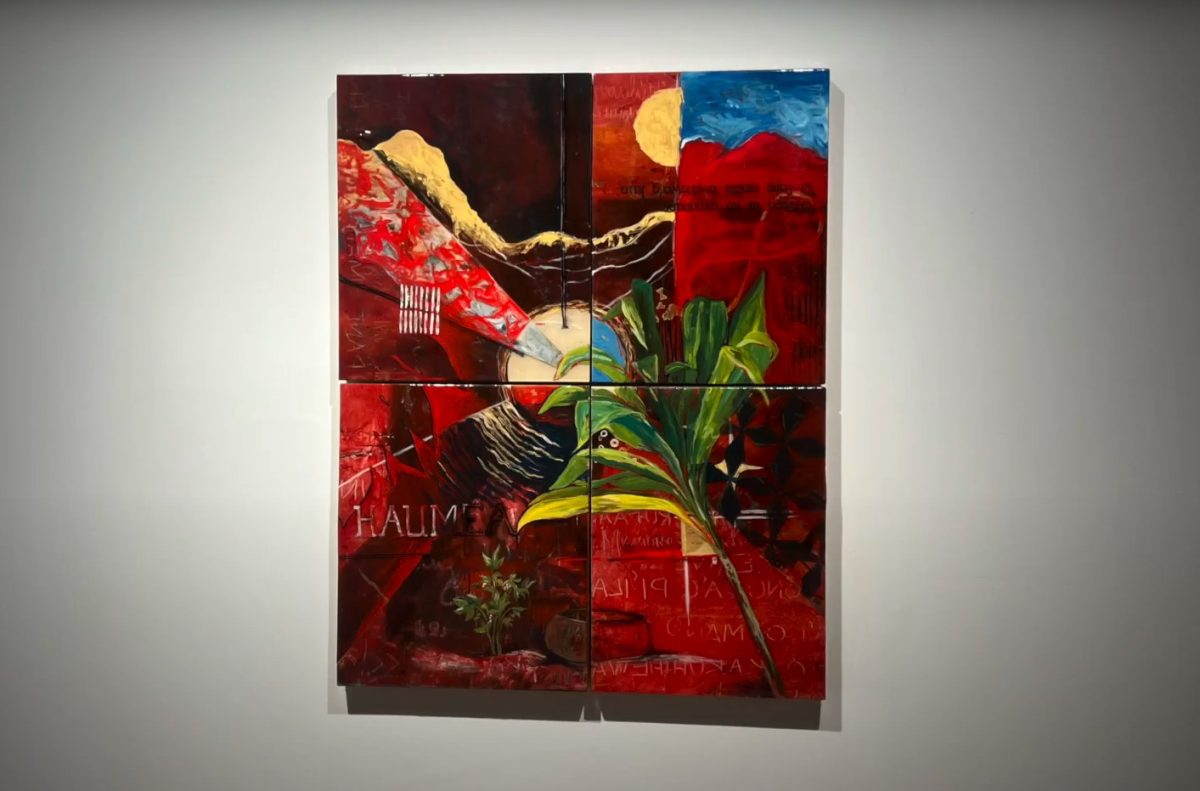
Dr. Celia Smith, a professor of botany at the University of Hawaiʻi at Mānoa, has a lab with two students, Sarah Vasconcellos and Nicole Yamase, who have developed restoration efforts of Limu Kala.
These wāhine figured out how to grow keiki plants through to several months old using the juvenile plants to recruit onto surfaces that could be outplanted onto reefs.
Their work creates new methods of seeding limestone tiles with juvenile limu kala and planting in areas where the reefs were once abundant with limu kala. A long-term expected outcome of this project is to encourage the growth of other native species, and the return of native fish into these waters.
“There is a need to restore once-lost native habitats and understand how a native species in their waters was depleted so quickly, as we lose native species, we risk not having native habitat anymore,” Smith said. “If we are not able to keep our native communities together, I think our chances to survive climate change become more challenging.”
“The reason that I think we lost the Kala from the Waikīkī area is the impact of an invasive alga that was planted on that reef,” Smith said.” The shores of the now tourist-dominated beaches were once plentiful in this keystone species, until Gracilaria salicornia, better known to some as “Gorilla Ogo” destroyed Native ecosystems.
“This invasive species doesn’t grow quickly but slowly; it did over-grow our three Native limu kala,” Smith said, “and brought change where we lost our Sargassum (Limu Kala).”
Some define Limu Kala as the glue that holds an ecosystem together.
Kānaka Hawaiʻi also favors it.
“I would argue that our native species are so important as a foundation to having our reefs healthy that we need to take active steps to conserve the populations we have,” Smith said. “Before we do any of that, the invasive algae that was planted- that thing needs to be gone.”
Limu kala is a foundation for many aspects of Hawaiian culture, from food to traditional forgiveness practices.
“Yes, generally in Hawai‘i the limu are edible,” said James Fumo, a Marine Biology doctoral student at the University of Hawaiʻi at Mānoa. “I say this based on the algae themselves and am not talking about areas of contamination. … I don’t think it would be a good idea to eat limu out of the Ala Wai, no matter what species we are talking about. I have personally only eaten Limu Kala straight off of the plant while in the water on the beach. It is pleasant and I enjoy the texture.”
Limu Kala was also made into lei. As described in “Aspects of the Word Lei,” written by Mary Kawena Pukui, Limu Kala was worn in hula hoe to respect the akua (deities) of the sea. A lei Limu Kala was also used religiously, to free one from an evil influence.
Limu Kala can still be found at Kamokuʻākulikuli (“Sand Island”) and even at Lēʻahi (“Diamond Head”) yet, are not to their former glory.
“I remember couple summers ago, the temperatures of the water really dropped. I remember I was surfing, and it was like bathwater,” said Senator Maile Shimabukuro. “It was killing the reefs, it was killing the limu. I mean with global warming, which is something we can feel in the ocean, we need to act fast before everything is gone.”






